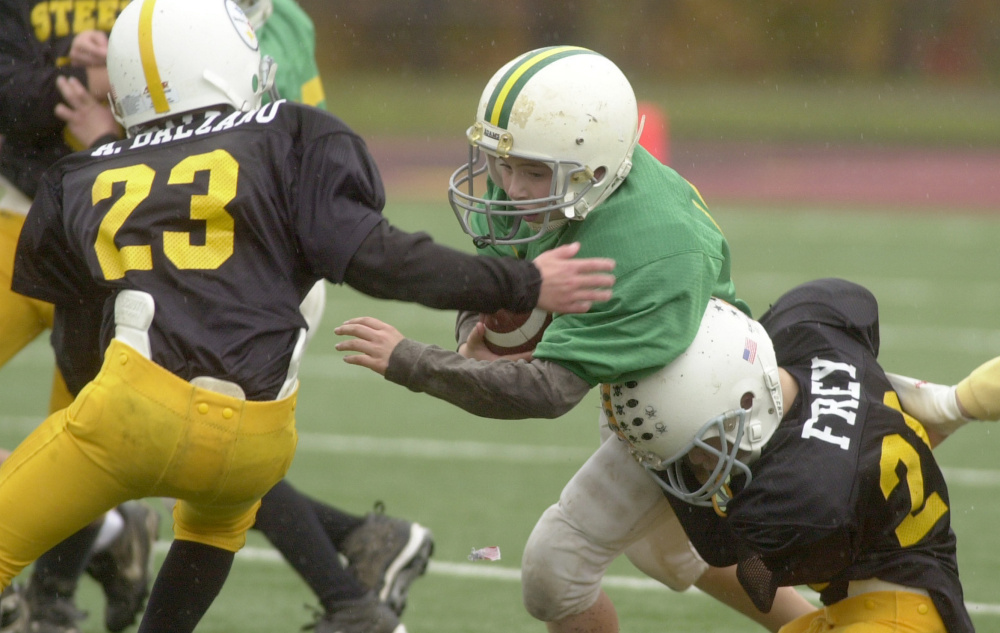After Mike Webster, Junior Seau and Dave Duerson, after “League of Denial” and “Concussion,” football players at the highest level are counting their concussions and deciding whether it is a good idea to keep playing, while officials are ordered to look out for wobbly legs on the field, a sign of possible brain injury.
But more and more it looks like those risks are not limited to the professionals – to the biggest and strongest who play the game for money – nor is it as simple as watching out for concussions. That should have every parent and youth coach concerned, and ready to take action to keep kids safe.
The latest bit of worrisome research comes from Boston University’s Chronic Traumatic Encephalophy Center, well known for testing the brains of former NFL players for CTE, a degenerative brain disease that is found in people with a history of repetitive brain trauma, and which can only be diagnosed posthumously.
Of the 111 NFL players tested at the center, 110 have tested positive for CTE. In addition, seven of eight players from the Canadian Football League tested positive, as did nine of 14 semipro players, 48 of 53 college players, and three of 14 high-school athletes.
As those results suggest, size, speed and duration of play were commonly seen as factors in developing long-term problems from playing football. But that’s not the whole story.
In a study published this week, researchers at the center say it may not be so much how long you play, or how hard, but when. The developing brains of adolescents, they argue, are particularly vulnerable to injury, even from relatively minor collisions, and the effects can last a lifetime.
The study shows that children who played tackle football before the age of 12 double their risk of developing mood and behavioral problems. They also triple their chance of depression as adults and have a greater risk of having difficulty with problem-solving and organizing. Those effects are not tied to the number of concussions, either – they are from the kind of repetitive, non-concussive hits that happen dozens of times to each player every game.
Those hits, another study shows, are associated with the alteration of the brain’s white matter, and can occur even after as little as one season of youth football.
The timing of those changes is evident even in professional football players, another study showed, with players who started before age 12 noticeably worse off than those who started later.
Some youth football leagues are already adjusting. Some limit the number of games, or the number of days players can have full contact. The NFL is sponsoring a league with a smaller field, fewer players, no special teams and other changes meant to cut down on violent collisions.
That may not be enough. Tackle football is tackle football, however you frame it. Changes may limit the number of obviously harmful plays, but it is impossible to remove all the little collisions that researchers say add up to big problems.
More research is needed, but it looks like tackle football and young kids just don’t mix. Indeed, some communities have switched to flag football for its younger participants. Others should follow.
NFL players have reviewed the latest information on football and brain trauma, and some have opted to retire early.
With youth sports, the decisions on what and when to play ultimately fall on parents and coaches, and it’s on them to make the right choice for kids.
Send questions/comments to the editors.


